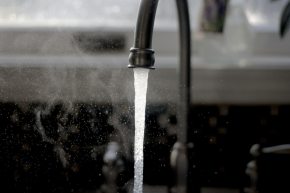 Around ten deaths a day are due to accidental drowning, and one in five of those are children under the age of 14. Teaching children about water safety around the home is an important part of their learning. It doesn’t take much for a child to drown, but flooding can also be a serious problem in the home when taps are left on. Along with education, there are devices that can warn you before this happens to help keep your home and family safe.
Around ten deaths a day are due to accidental drowning, and one in five of those are children under the age of 14. Teaching children about water safety around the home is an important part of their learning. It doesn’t take much for a child to drown, but flooding can also be a serious problem in the home when taps are left on. Along with education, there are devices that can warn you before this happens to help keep your home and family safe.
Cameras And Lights Can Improve Safety In The Garden
75% of drowning deaths in children under 15 years old occur at a private residence, such as a family pool or a neighbor’s. Having a swimming pool or a pond in the backyard can make your home more enjoyable, but it presents risks to everyone, especially children. Children should be taught water safety and how to swim and tread water, should they ever fall into a pool. When someone is used to being in the water, they are less likely to panic if they fall in, and have a better chance of saving themselves. Having cameras and motion sensor lights around your pool can increase the chance of you noticing when someone falls into your pool or pond, and you will be able to help them quicker. You should also fence around pools so there’s less risk of falling in, and keep ponds away from where children will play.
Kitchen And Bathroom Safety
Kitchens and bathrooms have a lot of potential water safety issues, such as sinks and the bathtub. Drowning is the biggest risk, so young children should never be left unattended when using the kitchen or bathroom, but there’s also a risk of flooding if a faucet is left running, which can cause significant damage to your home. Bathtub and sink fill devices can be placed on the edge of the tub or sink at the maximum height you want it to be filled. When the water hits the sensor, a tune or alarm will go off to remind you to turn off the taps or notify you that someone has left them on. This is particularly useful for busy parents and people with memory problems, such as elderly family members.
It’s important that children aren’t afraid of water or swimming pools, but that they understand the risks involved and how little water is needed for drownings to occur. Teaching children to swim will make them more confident in and around the water, and if they ever find themselves in trouble, they’ll be more likely to be able to save themselves.
Image Source: https://unsplash.com/photos/vDQ-e3RtaoE

.png)